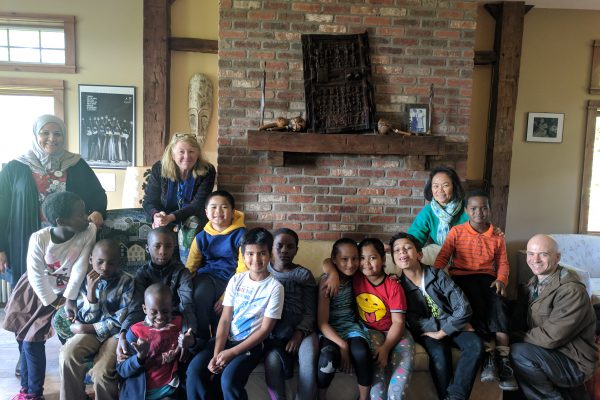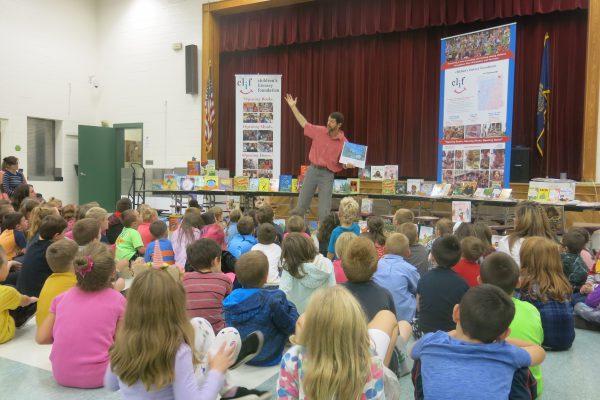


Dancing is, without a doubt, a wonderful outlet for self-expression. Dance can be a way to tell stories, interpret emotions, inspire healthy movement, and create cultural meaning. It is a universal language, no matter what your age or ability!
How about connecting dancing with literacy instruction?
I recently had the pleasure of witnessing literacy and dance come together at the Integrated Arts Academy (IAA) in Burlington, VT, where students performed dances they choreographed with Rose Bedard as part of a teaching artist residency sponsored by the Vermont Arts Council and CLiF’s Year of the Book grant.
In preparation for the residency, each of IAA’s 16 classrooms (preK-5) read Abdul’s Story (Jamilah Thompkins-Bigelow) about a child who loves to tell stories but struggles with handwriting. The book offers an honest portrayal of learning differences, while demonstrating that mistakes are part of the creative process, and highlighting the importance of role models who reflect kids’ own backgrounds. Abdul’s Story is also a nominee for the 2023-24 Vermont Red Clover Book Award.
During her time at the school, Rose guided students through discovering dance vocabulary and discussing story elements from the book. Each class then created unique dances to communicate their interpretations of the book.
Inspired by Abdul’s Story
These essential questions informed the residency:
- “How do writers tell stories?”
- “How do dancers tell stories?”
Bringing Stories to Life
Students created dances to demonstrate their understanding of story structure, setting, characters, themes, and messages in the book. Sample learning goals included:
- “I can identify the parts of a story.”
- “I can make a dance to show my understanding of story structure.”
- “I can demonstrate patterns through dance and movement.”
Each classroom had a different interpretation of the story, with movement sequences tiered according to ages. And each class had a different song–all with danceable beats and lyrics linking to the themes. For example, one fourth grade class choreographed their movements to Sia’s “The Greatest.”
The Joy of Movement
Rose is a hip-hop dancer, so her movements are articulated and joyful. Her presence and love of dance clearly inspired confidence. Students weren’t required to perform, and yet almost everyone did. Proudly! Families and caregivers were invited to attend and watch as well, rounding out this experience with a community building moment.
Reflections on Learning
We might not automatically think of literacy and dance as straightforward companions, yet they have a powerful symbiotic relationship. The performing arts can be a wonderful way to help students understand and interpret literature, themes, and characters, while enhancing connections around learning and literacy.
For those interested in bringing this type of residency to a Vermont school, take a look at the Vermont Arts Council Artists in Schools Grant (there’s dance, storytelling, theater, writing, and so much more!). This grant opens in July and any questions can be directed to the Vermont Arts Council. In New Hampshire, check out the grants available through the State Council on the Arts, as well as New Hampshire Humanities.
And, for a remarkable opportunity to infuse a school community in Vermont or New Hampshire with books, engagement, and fun events, please consider applying for a CLiF Year of the Book grant for 2024-2025. We are accepting applications through March 15, and I welcome you to contact me with any questions you may have.




I love this! Marrying literacy and dance is such a lot of fun… and creating the culture of kids who are willing to take the risk to dance is wonderful. It is a great connection to the VT Children’s Red Clover PIcture Book award… well done! Great article Cassie.